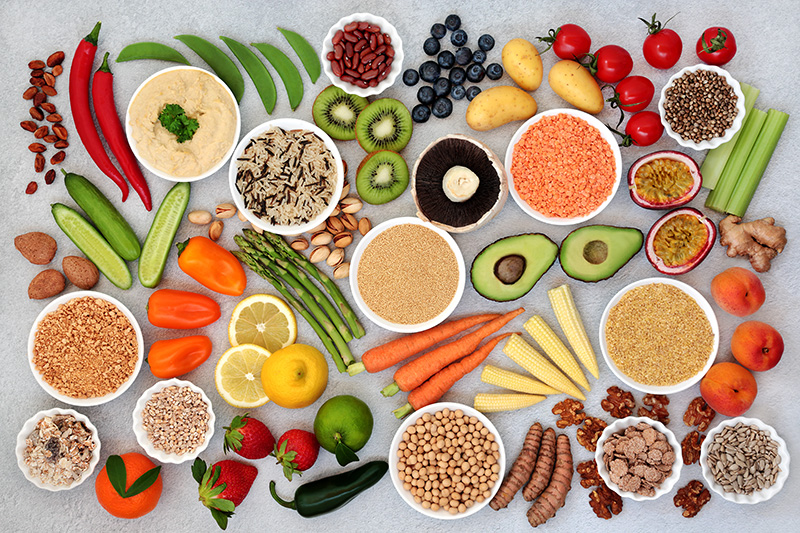Healthy nutrition
Properly organized nutrition is the most effective factor in disease prevention. There is a close relationship between nutritional imbalance and the development of not only a variety of specific syndromes of nutritional deficiency and excess, but also a variety of diseases of non-infectious nature: CHD, GB, diabetes mellitus, gout, a number of diseases of the digestive system, kidney, cancer and others.
Improving the structure of nutrition is the basis for the prevention of diseases of alimentary nature.
Properly organized nutrition provides constancy of internal environment of the organism (homeostasis) and supports its vital manifestation at a high level under various conditions of work and life.
The human organism is a complex biological system and for normal functioning it requires nutrition to approach physiological optimism.
Proper nutrition is not about calorie control and rigid diets, but about providing the body with a complete diet that includes all the foods it needs.
The need for nutrients and energy depends on age, gender, lifestyle, health status and many other factors, and you should eat as much as your body requires and uses.
The general requirements for the food ration are formulated in the following postulates.
1. Daily food ration should correspond to the energy value of the energy expenditure of the organism.
2. Physiologic needs of the organism should be provided with food substances in quantities and proportions that have maximum useful effect. 3. The chemical structure should maximally correspond to the enzyme-enzyme structure.
3. The chemical structure should maximally correspond to the enzyme digestive systems of the organism (the rule of correspondence).
4. The food ration should be properly distributed throughout the day, as it ensures the efficiency of the digestive system, assimilation of nutrients and regulates metabolic processes.
At 3 meals a day distribution of the daily energy value of the diet should be 30% - for breakfast, 45% - for lunch, 25% - for dinner. With 4 meals a day the first breakfast should account for 25%, the second breakfast - 15%, for lunch - 35% and for uzhen 25% of the energy value.
5. Rational nutrition should be impeccable in sanitary and epidemiological terms, i.e. products should not pose a danger to health due to the presence of physical, chemical and biological contaminants or spoilage processes during improper storage and realization.
Urbanization, the increase in processed food and changes in people's lifestyles have led to changes in dietary patterns.
WHO's basic recommendations include:
1. Daily consumption of at least 400g. (5 servings) of vegetables and fruits, with vegetables always included in the diet and fruits can be as a snack.
2. Energy intake and energy expenditure (calories) should be approximately equal.
3. Reduce fat intake to less than 30% of total calories consumed. Saturated fats should make up less than 10% of calories, trans fats less than 1%. Saturated fats and trans fats should be replaced by unsaturated fats, particularly polyunsaturated fats. It is desirable to exclude industrially produced trans-fats from the diet altogether.
4. Limiting the consumption of simple sugars to less than 10% of the total number of calories, and if reduced to 5%, the health benefits will be greater. It is better to replace sweet snacks with fresh fruits and vegetables.
5. Reduce the level of salt intake to the recommended daily level, which is no more than 50g per day (for sodium, no more than 2.0g per day). Salt should be iodized. Potassium, which enters the body through fruits and vegetables, can help mitigate the negative effects of excess salt on A/D.
6. Legumes (lentils, beans) nuts whole grains (corn, millet, oats, wheat, uncooked rice) should be included in the diet.
For infants, WHO recommends:
1. exclusive breastfeeding for the first few months of life.
2. Supplementing breast milk from six months of age with complementary foods made from a variety of safe and nutritious foods, but without added salt and sugar.
3. Continuation of breastfeeding during the first two years of life and later.
Hayotov R.M., senior lecturer of the department of hygiene and ecology
translated Ismoilov R.

